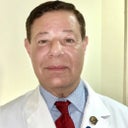Posted underEyelid Surgery q&a
Would fat grafting or fat repositioning deliver better results in the long term? Hoping to address lower eyelids (photo)
Lower Blepharoplasty Which procedure has the best results overtime, fat grafting or fat repositioning?
Answers (6)
From board-certified doctors and trusted medical professionals

Dr. Nelson Lee Novick, MD
Dermatologic Surgeon, Board Certified in Dermatology
Answer
Dr. Mats Hagstrom, MD (license on probation)
Board Certified Plastic Surgeon
Answer
More Eyelid Surgery Questions
See all Eyelid Surgery Q&AWE SEND PRETTY
EMAILS
What’s trending? Who’s turning heads? Which TikTok myths need busting? We’ve got you. No fluff, no gatekeeping—just real talk. Get our free, unfiltered newsletter.

